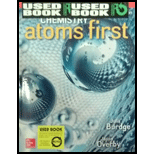
Concept explainers
(a)
Interpretation:
The given organic compound should be drawn as a Kekule structure or condensed structural or Bond line structure
Concept introduction:
Kekule structure: A Lewis structure in which bonded electron pairs in covalent bonds is shown as lines.
Writing organic structures in a line of text format is called condensed structural formula.
Bond line structure is a simple way of writing organic structural formula.
(b)
Interpretation:
The given organic compound should be drawn as a Kekule structure or condensed structural or Bond line structure
Concept introduction:
Kekule structure: A Lewis structure in which bonded electron pairs in covalent bonds is shown as lines.
Writing organic structures in a line of text format is called condensed structural formula.
Bond line structure is a simple way of writing organic structural formula.
(c)
Interpretation:
The given organic compound should be drawn as a Kekule structure or condensed structural or Bond line structure
Concept introduction:
Kekule structure: A Lewis structure in which bonded electron pairs in covalent bonds is shown as lines.
Writing organic structures in a line of text format is called condensed structural formula.
Bond line structure is a simple way of writing organic structural formula.
Want to see the full answer?
Check out a sample textbook solution
Chapter 23 Solutions
Chemistry: Atoms First (Comp. Instructor's)
- (a) Name the functional groups present in the molecule below : он CH,CHCH,ċ-oH (b) Draw the structural formulae for the cis and trans isomers of the following compound: H;C- -CH3arrow_forwardA certain hydrocarbon has a molecular formula of C5H8. Which of the following is not a structural possibility for this hydrocarbon? (a) It is a cycloalkane. (b) It contains one ring and one double bond. (c) It contains two double bonds and no rings. (d) It is an alkyne.arrow_forwardWrite the chemical formula and Lewis structure of the following, each of which contains five carbon atoms:(a) an alkane(b) an alkene(c) an alkynearrow_forward
- convert the following line structures to condensed structuresarrow_forward2) a) b) Write the condensed structure for the following molecules: O OHarrow_forwardWhich of the following can exist as cis/trans isomers. For any that can write both the cis and the trans structures. (a) CH2=CHCH2CH3 (b) CH3CH2CH=CHClarrow_forward
- Classify each of the following hydrocarbons as alkanes, alkenes, or alkynes.(a) C6H14 (b) C3H4 (c) C9H18arrow_forwardA certain hydrocarbon has a molecular formula of C5H8. Which of the following is not a structural possibility for this hydrocarbon: (d) It contains an alkyne O It contains one ring and one double bond (c) It contains two double bonds and no rings O (b) It contains one ring and no double bondsarrow_forward(CH3)2CHOH condensed structurearrow_forward
- Write a condensed structural formula, such as CH3CH3, and describe the molecular geometry at each carbon atom.(a) 2-propanol(b) acetone(c) dimethyl ether(d) acetic acid(e) 3-methyl-1-hexenearrow_forwardThis question is about the chemistry of alkenes, which are unsaturated hydrocarbons. (a) State what is meant by the term unsaturated as applied to a hydrocarbon. (1) (b) An organic compound, X, is an unsaturated hydrocarbon with molecular formula CH₂. (i) Draw the displayed formulae and give the names of two molecules with molecular formula C₂H, which are E/Z isomers. (3) Isomer 1 Isomer 2 Name: Name:arrow_forwardWhich of the following substances exist as can cis–trans isomers? Draw both isomers for those that do.(a) 2,3-Dimethylpent-2-ene (condensed structures only)(b) 2-Methylhex-2-ene (both condensed and line structures)(c) Hex-2-ene (line structures only)arrow_forward
 Chemistry: Principles and ReactionsChemistryISBN:9781305079373Author:William L. Masterton, Cecile N. HurleyPublisher:Cengage Learning
Chemistry: Principles and ReactionsChemistryISBN:9781305079373Author:William L. Masterton, Cecile N. HurleyPublisher:Cengage Learning
